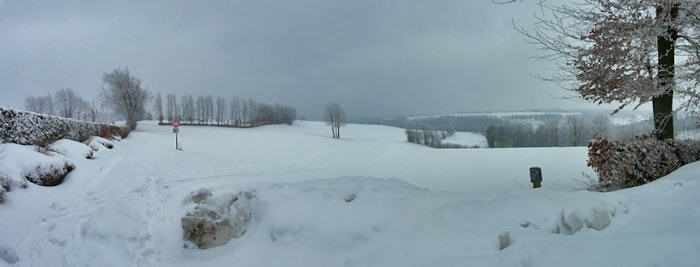in the Attack on Kesternich
30 January - 1 February 1945 - (Rhineland Campaign)
By Captain John H. Barner

DISPOSITIONS AND PLANS OF THE 311TH INFANTRY
On 28 January the 311th Infantry occupied defensive positions in the KESTERNICH salient with two battalions abreast.
The essential elements of Field Order No. 1, 311th Infantry, 291500 January 1945 which was issued for this operation were as follows:
The 1st Battalion was to hold in its present position until a passage of lines was effected by CCA, 5th Armored Division. It would then be attached to this combat command. The 3d Battalion would attack in its zone to capture HUPPENBROICH. The 2d Battalion, with Company A 736th Tank Battalion attached, was to attack and seize successive objectives in KESTERNICH, consolidate on its objective for defense, and tie in with the 309th Infantry on the north (left). 23
THE BATTALION SITUATION
Initially the 2d Battalion had occupied a sector of the front line held by the 311th Infantry Regiment upon its return to the 78th Division on 27 December 1944. On the night of 18-19 January 1945 the 2d Battalion was relieved by the 3d Battalion, 309th Infantry Regiment which had been attached to the 311th Infantry. Upon relief the 2d Battalion took up positions on the regimental reserve line in the vicinity of LAMMERSDORF. 24
While in this position one rifle company from the battalion was attached to the 1st Battalion until two days prior to the forthcoming attack on KESTERNICH. 25 Plans were made for a withdrawal and rear positions were developed. In spite of these preparations which were generally believed to be training exercises it was felt that an attack would take place in the near future. For this reason the battalion carried on an extensive training program in the techniques of assault on fortified positions and the training of tank-killer teams. 26
When the mission for the 2d Battalion was assigned the Battalion Commander was absent and due to an unavoidable delay could not rejoin the battalion until 29 January 1945, the day before the attack. The entire planning load was carried by the executive officer and battalion staff. Plans were made and all orders were issued prior to the return of the Battalion Commander. Since it had been impossible to keep the Battalion Commander informed of developments during his absence it was necessary for him to digest all plans and orders in one day as well as direct the execution of an operation in which he had no part in planning.
KESTERNICH, the battalion objective, sit on high open ground with little change in elevation within the town itself. The buildings in the town are not joined in solid block formations. Intervals exist between each building. Open areas surrounding the town are divided into fields by dense hedgerows. Excellent fields of fire made it impossible to envelop the town from either side. About 1000 yards to the south of the town an extremely deep draw fingers up from the ROER RIVER. Two branches of this draw point northward toward the town. Numerous other draws to the east and northeast of the town afforded the enemy excellent positions in which to emplace mortars or to assemble troops for counterattacks. The slopes of these draws are densely wooded and very precipitous. KESTERNICH was critical terrain feature for the reasons that it commanded the approach to the STRAUCH-STECKENBORN RIDGE and the assembly areas in the draws along the ROER RIVER.

View from Kesternich facing southwest. (Feb. 2010)
Pretty much same weather conditions as in Feb. 1945)
The weather was cold. Snow covered the ground in varying depths from six inches to six feet. In spite of the proximity to frontlines a portion of the road between SIMMERATH and KESTERNICH, which was to be used by the battalion, was cleared of snow with the aid of bulldozers. The snow offered one small advantage. In some instances the crust would support the weight of a soldier to the extent that anti-personnel mine fields could be crossed without detonating the mines. 27
On 26 January numerous readjustments within the 311th Infantry were made in preparation for the attack on 30 January. The 2d Battalion, with K Company, 309th Infantry attached, relieved the 3d Battalion, 309th Infantry (- Company K). This placed the 2d Battalion back on the line they had previously held. F and G Companies were placed on line with F Company on the north. 28 By 29 January E Company had been moved to SIMMERATH and K Company, 309th Infantry had reverted to parent unit control. 29

